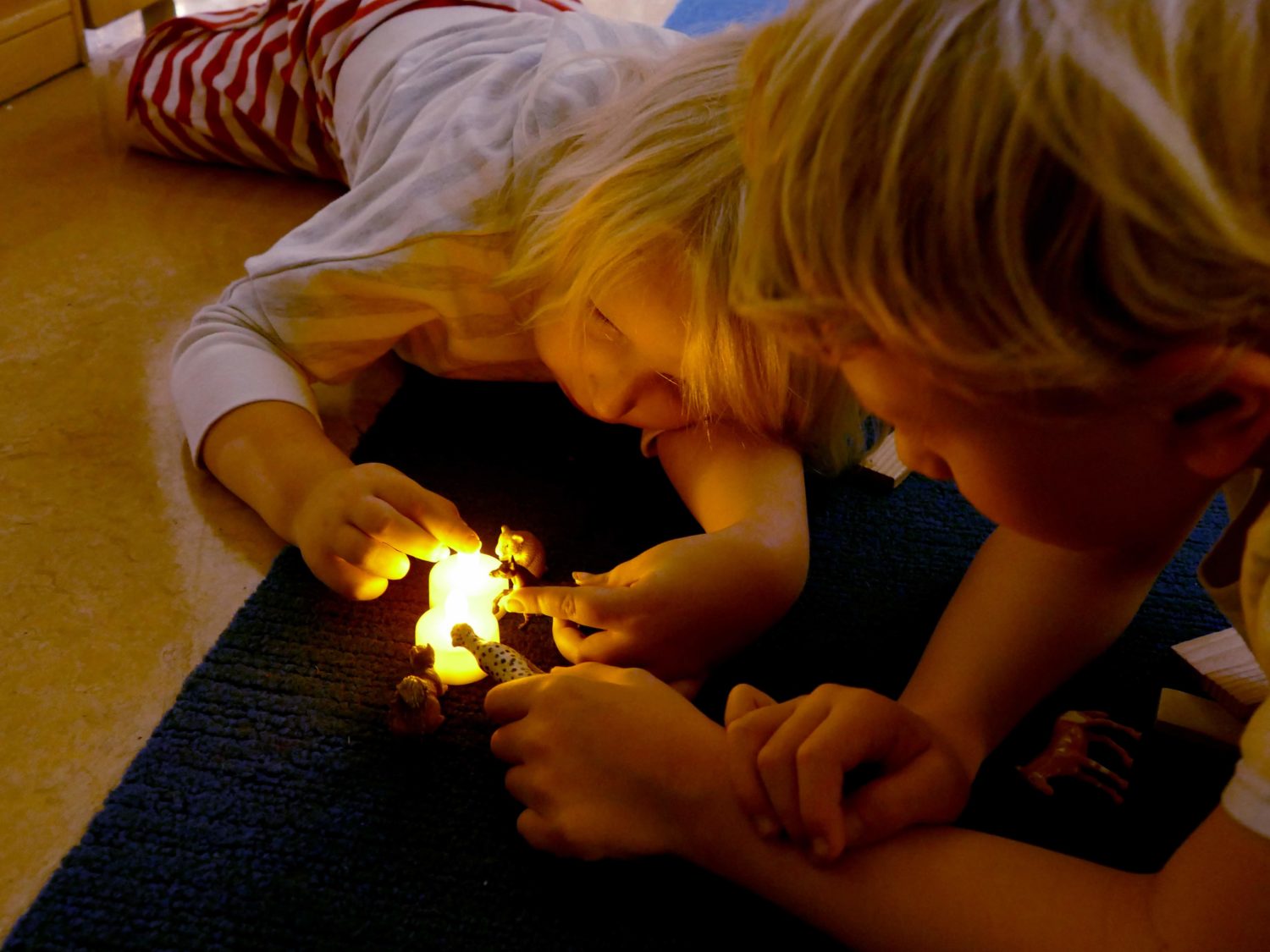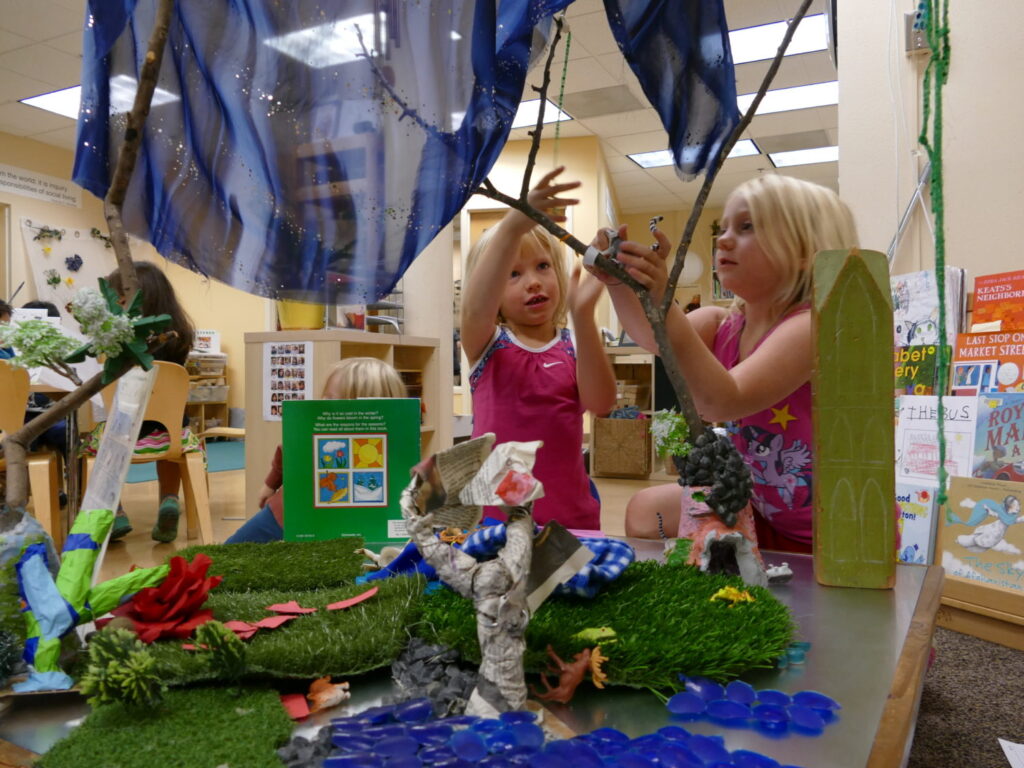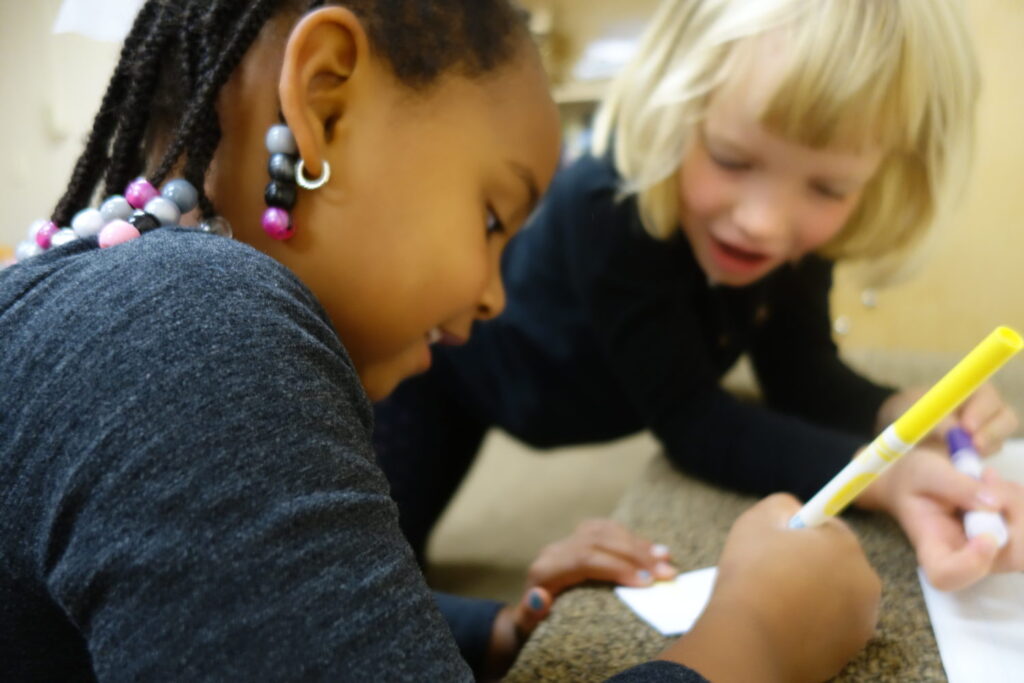Materials In All Phases of The Writing Process

The kindergarten and first grade children in Cottonwood have been preparing to publish stories about characters that they invented and developed over time. These characters include hummingbirds, snapping turtles, crabs, ladybugs, deer, a peach, many different kinds of owls, and even a hiker named “Mikey Hikey.”
In the early stages of writing, the children were using materials daily to find the character that they felt most excited about, play with their character to find out more about it, and discover the story that they wanted to share about their character. For example, children explored different ideas with small versions of their character and found story possibilities; dramatic play allowed children to become their character and step into its’ perspective on the world; painting opened up possibilities for getting the images and stories that the children had in their minds regarding their characters out on paper.

As children found the stories that they wanted to tell about their characters, I noticed that material usage during Story Workshop was lessening. During the Invitation/Negotiation stage of Story Workshop, children were often choosing to go straight to writing even though materials was also a choice. As a teacher, I felt a tension. In my time at Opal, I’d heard many teachers and children talk about how materials helped them grow their ideas as writers, revise their writing, add details, etc., so I trusted that there was great potential here for materials to continue helping these authors grow their stories. I struggled to envision what using materials in this phase of the writing process might look like.
Kerry and I met to talk about this many times, which led me to identify one my big research questions this year:
How can materials support children to grow as writers through all phases of the writing process?
I knew that an essential piece of authentic inquiry is bringing questions to children that I don’t hold answers to. Additionally, I knew that the best way to find out more about this was to research with the children! So, I asked the children how they thought materials could help them to grow their character stories.
Alice responded,“Materials are for getting ideas.”
It struck me right away that Alice’s first idea about how materials can support writers was also the extent of my understanding as a teacher. I wondered how much my learning edges had influenced Alice’s thinking about the possibilities that materials can open up for her as a writer. Many children agreed with Alice – and some also said that they thought materials could do more than help writers find ideas. This was a natural place to inquire together about the possibilities materials offer writers at all stages of the writing process. The following day I set up material provocations for the children. As a community, we discussed the intention for the Story Workshop that morning and I invited the children to go to materials with their character stories and research how the materials themselves can help the children continue to grow the stories that they had already found.
Some children had ideas about where they would begin right away:
Amy: I want to go to small world so I can play with my bunny and find out more about what my character can do.
Brittany: I will go to watercolor so I can paint and act my hummingbird out…I don’t know if I can fly yet. I need to find that part out.
Marcus: I’m going to Kapla blocks and collage…I need to build my turtle’s house and know how it becomes friends with the frog.
Other children felt stuck and adamant that they wanted to go straight to writing. I checked in with these children and we realized that some of them felt strongly about not using materials because “they already had a story idea.” They were in uncertainty, just as I was, unsure how going to a material might help their writing. We talked about this uncertainty for a bit and also about how trying something new as a writer, when you care so much about your idea, is a risk and that this is normal and okay. They agreed to take a risk and have a go at materials, to come back and share what they found out with the group later.
As I observed children playing and writing over the course of the next few days, I noticed many children who had been moving very slowly through the capturing part of their story suddenly took off. When these children had captured what they knew up until that point, transitioning back to play was natural and they were beginning to trust that doing so was the best way for them to find out more about what happens next. Additionally, I saw some children going back to parts in their writing to add details that weren’t there before but that they had found through playing. Also, some children found that certain materials didn’t work for them! They were more distracting than helpful and together we got to explore different material choices to uncover what did help them to really zoom in on their writing.

We all came back together and I presented the research question to the children again.
Here are some additional things that we discovered materials can do:
Holly: Materials can help you play it out and you can just say, that’s a perfect idea to add to my story. It fits so good.
Drew: They can change an idea. I went to watercolor and I drew my owl’s nest at naptime…and I got an idea that it was so hot at nap time that I added air conditioning for my character.
Sabrina: I think it’s both. They can help you get ideas AND get distracted.
Holly: They can help you find the perfect color for your character, so their color matches on each page and the reader knows, “Hey! That’s the same character on every page!”
Aaron: I was using lots of sticky notes today, materials helped me to add new words. Like, I found my bed is cozy. It has feathers and flowers and I also eat snacks three times a day. Next, I want to find the color of my house and what goes in my house.
Amy: If you’re in the middle of your story and you’re like, “What was the next thing I was going to add?” You can go to small world try to play with the materials and remember where you were at.
James: The more you play, the more ideas you get.
I know that this is only the tip of the iceberg. I am so excited to continue this research with the children because, as the children expressed above, we have already found that materials hold so much potential beyond inspiring initial story ideas. The only way to continue this research is for me to live in uncertainty with the children, navigate bumps together, reflect, and make informed choices for where to go next.
Reader,
In what ways have you noticed materials helping children to grow their stories at all phases of the writing process?
How are you living in uncertainty and researching with the children in Story Workshop?

This is helpful! Thanks for sharing the many ideas the children had for how materials support the whole process and how you went about researching and reflecting on that question.